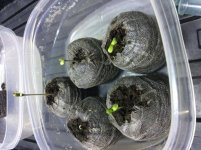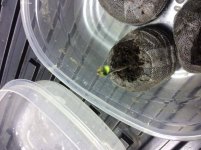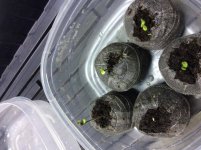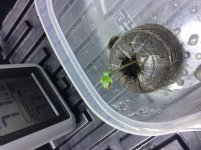Hello , I have been having this issue a lot when I buy seeds and try sprouting them , I’ve kinda gave up . I use to use coco then found better success in peat pellets .
I soak the pellets for hours in bottled water .nestle . Put the seed in the pellet put the pellets in a humidity dome . I ring the pellets out a bit so they are not water logged . Out of 6 I get maybe 1 survivor. I’ve done it many different ways . Paper towel method . Soak seeds in a glass of water ect. They look like they are yellow and. Out of food. Plz help
I soak the pellets for hours in bottled water .nestle . Put the seed in the pellet put the pellets in a humidity dome . I ring the pellets out a bit so they are not water logged . Out of 6 I get maybe 1 survivor. I’ve done it many different ways . Paper towel method . Soak seeds in a glass of water ect. They look like they are yellow and. Out of food. Plz help








